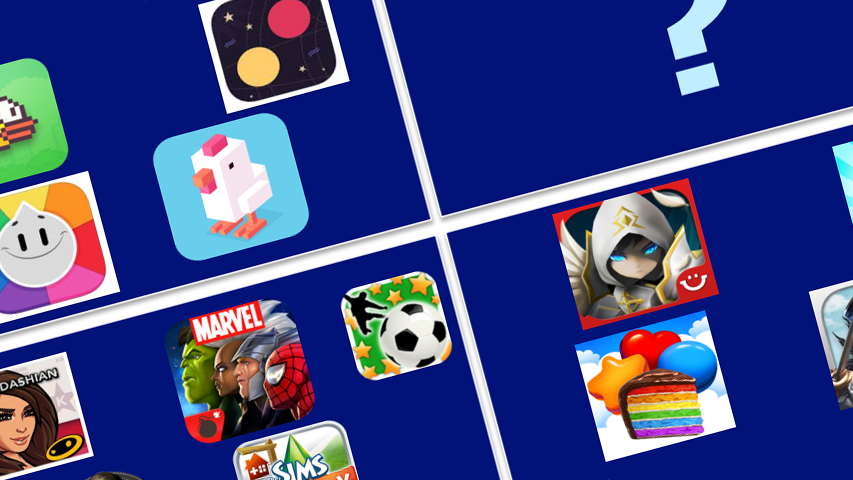The other day, Eric Seufert, Vice President for Acquisition and user engagement at Rovio, published a presentation of his report with GDC Europe 2015. There are a lot of interesting things there (including an explanation of how to compete with the giants of the market), so we decided to give a short text that retells it in general terms.
Eric believes that today the main difficulty in launching free-to-play games on the mobile market is not at all in expensive traffic, but in the fact that success in stores is by definition difficult to achieve.
As of January 2015, there were 1.21 million apps on the App Store and 1.43 million apps on Google Play. At the same time, more than half of all users are satisfied with 1-2 applications. As for downloads, 65.5% of users download, attention, 0 (“zero”) applications per month. And this is in the USA!
As for the tops, they are occupied, if we are talking about the top ten positions in the iPhone App Store free software chart, mainly by those applications that are mobile versions of services that already existed in the pre-mobile era. They also get there periodically, but applications whose owners have spent a lot on traffic and viral services like Instagram do not stay for a long time.
As for advertising costs, they are growing. And all because the largest developers monetize their grids and support them with their portfolio through cross-promotion. Therefore, with one title on hand, you are competing with big developers not based on the LTV > CPI scheme, which implies that you will beat the old-timers with quality and good monetization, but with their entire grid, with all their applications at once.
For this reason, Sefert believes, it is pointless to compete with networks in monetary terms (meaning that an infusion of money in the long run will not help here). What to do? Choose the right promotion tactics for your product, think about its positioning and forget about the meaningless pumping of money.
There are two tactics: free growth and paid growth. The first, in turn, is divided into growth with and without a balance sheet (capital). Free growth without balance is all sorts of experiments, fast-made clones and unusual game mechanics. Free growth with capital is the use of IP or the development of an “accompanying” application. As for paid growth, it is possible, of course, only with a balance – and this includes only free-to-play games with a full-fledged economy.
Based on this setup, Sefert poses the following questions that the developer needs to ask himself when positioning the project:
- Does the game have a potentially large target market?
- Can I find a partner who will help me reach this market? Whom?
- Is this game unique enough to become viral?
- Can the essence of the game be quickly and clearly presented?
Seferth also gives the following tips:
- download speed and chart position should not be goals in themselves
- it is better to think in terms of the “product – market” relationship than LTV/CPI
- you shouldn’t clone someone’s success until you know their financial side of success
This is in short. There are many more interesting things in the presentation, for example, the analysis of Crossy Road, Marvel: Contest of Champions and Cookie Jam. You can find it just below.

